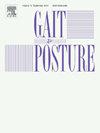Fully instrumented gait analysis in rare bone diseases – A scoping review of the literature
IF 2.2
3区 医学
Q3 NEUROSCIENCES
引用次数: 0
Abstract
Introduction
Fully-instrumented gait analysis (FGA) enables objective and scientific characterization of human motion parameters. It is unclear to what extent FGA is used in the care of patients with rare bone diseases (RBDs). Our purpose was to provide a scoping review to describe and categorize the spectrum of existing literature about FGA in patients with RBD, to report the key findings and the impact on the clinical management. Additionally, we aimed to explore the feasibility of establishing a minimum common standard for evaluating the quality of motion analysis studies.
Methods
Within the activities of ERN BOND (European Reference Network for Rare Bone Diseases), a systematic literature search was performed in the following databases: Ovid Medline, Cochrane Database of Systematic Reviews, CENTRAL Register of controlled trials, Embase, Global Health and Epistemonikos. Abstracts and full-text articles were screened by two independent reviewers. The PRISMA ScR protocol was followed, and quality assessment of all studies was done based on the 27-item Downs and Black Scale.
Results
The abstracts of 1053 studies were screened, and 64 full-text studies were assessed for eligibility and 24 studies could be included. We found reduced walking speed and step lengths being one of the most common features. Furthermore, characteristic patterns for several of the RBDs, as reduced ankle push-off power, increased lateral trunk lean and increased flexion pattern in the sagittal plane, are all contributing to an increased energy expenditure during gait. Several studies found a mismatch between static radiological findings and dynamic gait parameters.
Conclusions
Existing research indicates that FGA should be considered an important tool to better understand gait alterations and the effect of lower limb deformities on gait in these patients. Together with radiologic assessment FGA data might be used for clinical decision making and as outcome parameters in future observational and interventional studies.
求助全文
约1分钟内获得全文
求助全文
来源期刊

Gait & posture
医学-神经科学
CiteScore
4.70
自引率
12.50%
发文量
616
审稿时长
6 months
期刊介绍:
Gait & Posture is a vehicle for the publication of up-to-date basic and clinical research on all aspects of locomotion and balance.
The topics covered include: Techniques for the measurement of gait and posture, and the standardization of results presentation; Studies of normal and pathological gait; Treatment of gait and postural abnormalities; Biomechanical and theoretical approaches to gait and posture; Mathematical models of joint and muscle mechanics; Neurological and musculoskeletal function in gait and posture; The evolution of upright posture and bipedal locomotion; Adaptations of carrying loads, walking on uneven surfaces, climbing stairs etc; spinal biomechanics only if they are directly related to gait and/or posture and are of general interest to our readers; The effect of aging and development on gait and posture; Psychological and cultural aspects of gait; Patient education.
 求助内容:
求助内容: 应助结果提醒方式:
应助结果提醒方式:


